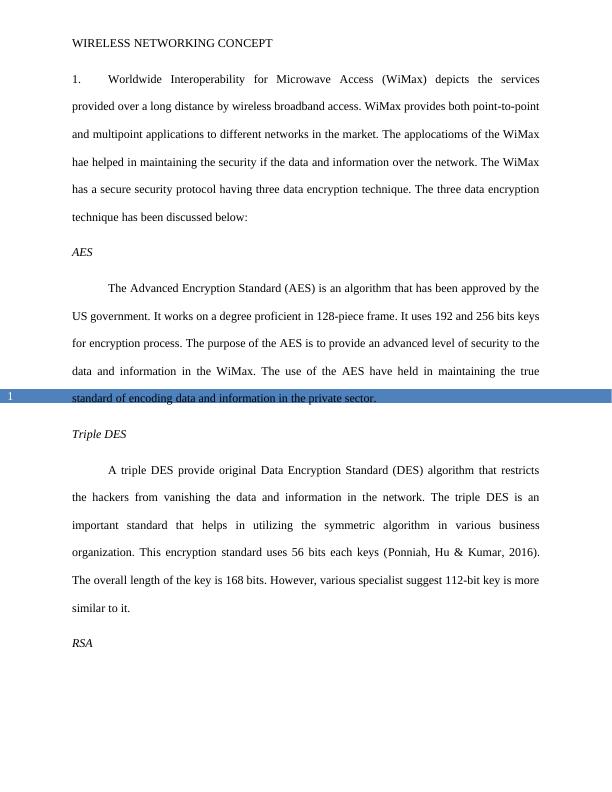Introduction to the Concept on Wireless Networking
7 Pages1309 Words50 Views
Added on 2020-04-01
Introduction to the Concept on Wireless Networking
Added on 2020-04-01
ShareRelated Documents
End of preview
Want to access all the pages? Upload your documents or become a member.
Wireless Networking Concept | Assignment
|7
|1457
|44
Wireless Networking Concept Name of the University Author's Note 1
|19
|1159
|117
Wireless Communication Standard
|10
|1400
|94
Assignment Wireless Networking (WSNs)
|9
|1464
|252
Wireless Networking Concepts Name of the Student Name of the University Author
|7
|1211
|425
Three Data Encryption Standards for WIMAX Networks Part 1: Wireless Networks
|14
|1565
|42



